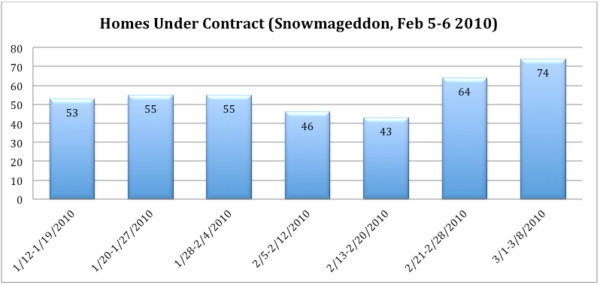This regularly-scheduled sponsored Q&A column is written by Eli Tucker, Arlington-based Realtor and Rosslyn resident. Please submit your questions to him via email for response in future columns. Enjoy!
Question: Why do Association fees vary so much?
There are three common categories of Association fees – Home Owners Association/Property Owners Association (HOA/POA) fees, Condominium (condo) fees, and Cooperative (coop) fees. Generally, condo and coop fees are due monthly, but HOA fees often vary between monthly, quarterly, and yearly payments.
(Generally) Coop Fees > Condo Fees > HOA/POA Fees
- All three fees cover common community elements like landscaping, pools, snow removal and master insurance policies.
- Some HOAs/POAs have very few common elements and have a relatively lower fee.
- Condo owners are only responsible for what’s inside the walls of their home and the association is responsible for everything else like the front door, windows, façade, balcony, roof, and all shared plumbing and electrical (e.g. you’re responsible for a backed up toilet or bad outlet). In order to cover the maintenance and replacement costs for these items, condo associations require much higher payments.
- Coops have higher fees than comparable condo buildings because they include utilities (some condos do too), property tax, and payments on a underlying mortgage for the building, if one exists. Coop ownership is much less common in Arlington than Washington DC. Outside of River Place in Rosslyn, there are very few options. In fact, all 21 active coop listings are at River Place. In comparison, DC has 94 active coop listings across numerous buildings, mostly located in Northwest DC.
The rule of thumb is that if it’s a building, it’s a condo or coop and if it’s a townhome or single family, it’s an HOA/POA (or isn’t part of an association at all). The most common exception to that rule is the townhome-style condo associations in Shirlington and Fairlington.
What Influences Fees the Most?
- Services/Amenities: Perks like a 24-hour front desk, pool, and seasonal landscaping add up and increase fees. Condos/coops usually have large management contracts compared to HOAs/POAs, which are often self-managed.
- Age: As buildings age, major replacement projects come due that can cost upwards of $1M. Some of the larger buildings take on projects in the $5-10M range. Financial mismanagement (improper Reserve savings) can force fees to skyrocket, special assessments, or both. I recommend that all of my clients get involved with their Board to help ensure sound management.
- Size: Whether it’s a large high-rise condo building or a sprawling community with lots of trees and landscape features, larger communities demand more resources to maintain and manage. Of course, larger communities tend to have more residents to share in the cost, but over time you’ll see higher relative fees in larger communities due to high maintenance and replacement costs. Elevators have more floors to travel, there’s more brick to re-point, and more pipes to replace.
- Master Insurance Policy: All Associations carry a master insurance policy to cover common space (liability and property) and these premiums are included in the fees. Generally the common property ownership and liability are much higher in condos/coops than HOAs/POAs and therefore premiums paid by owners are higher as well. On the other hand, the homeowner’s policy is much higher in HOAs/POAs than in condos/coops.
I highly recommend you and your agent review financial statements and Reserve studies/balances when purchasing in a condo, coop, or HOA/POA. Virginia law requires that these documents be provided prior to settlement and allows for a three-day window in which the Buyer can void the contract, without risking the Earnest Money Deposit, from the receipt of these documents.
One of the main financial benefits of condo/coop ownership is that your monthly/annual maintenance costs are more stable and predictable because there are very few big-ticket items to fix or replace. For example, if you’re in am HOA/POA or no association at all, you bear the full responsibility of fixing your roof after a storm, replacing windows, and dealing with expensive plumbing issues. In a condo/coop, your most expensive items to fix/replace are usually a refrigerator, HVAC system, or stove/range and won’t run much more than a few thousand dollars.
If you’d like a question answered in my weekly column, please send an email to [email protected]. To read any of my older posts, visit the blog section of my website at http://www.RealtyDCMetro.com.
Eli Tucker is a licensed Realtor in Virginia, Washington DC, and Maryland with Real Living At Home, 2420 Wilson Blvd #101 Arlington, VA 22201, (202) 518-8781.







